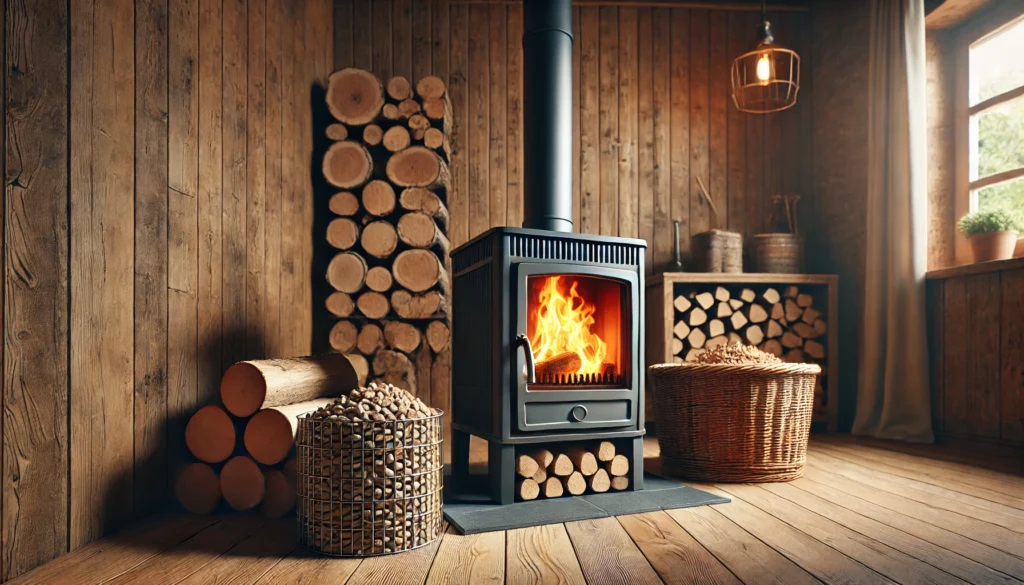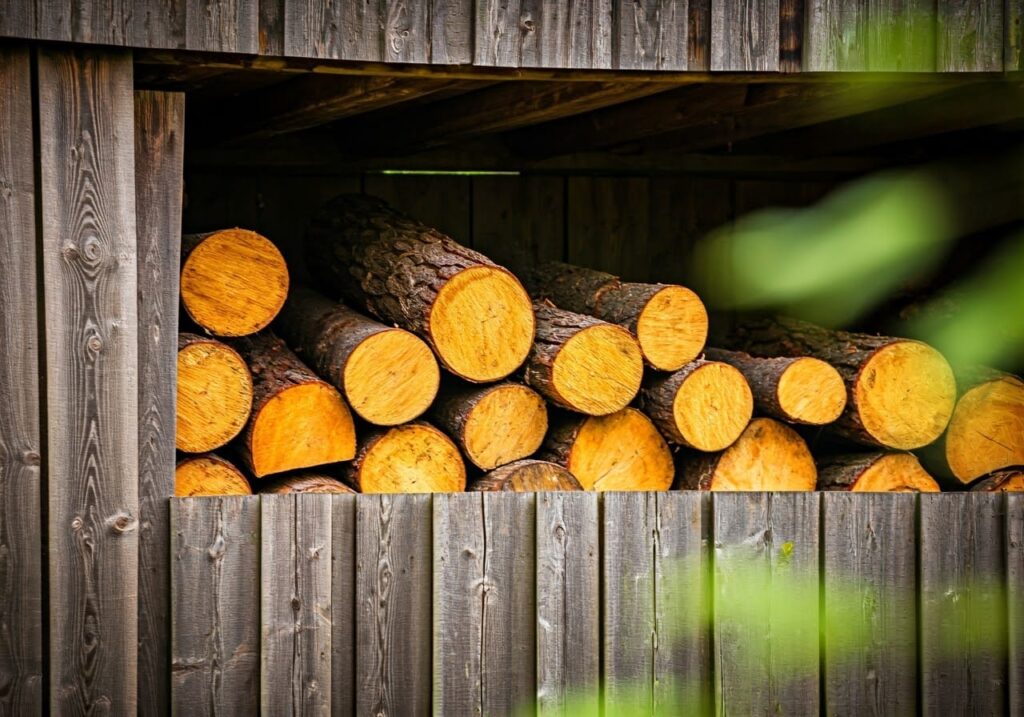With rising energy costs and growing environmental awareness, wood pellet stoves have become an increasingly popular heating choice for homeowners. Understanding how to select the right wood pellets is crucial for maximizing your stove’s efficiency and minimizing maintenance costs. This comprehensive guide will walk you through everything you need to know about choosing the perfect wood pellets for your heating needs.

Quality Indicators for Wood Pellets
| Quality Factor | Premium Grade | Standard Grade | Impact on Performance |
|---|---|---|---|
| Ash Content | < 0.5% | 0.5-1% | Lower ash = less cleaning |
| Heat Output | 8,500+ BTU/lb | 8,000-8,500 BTU/lb | Higher BTU = more heat |
| Moisture Content | < 6% | 6-8% | Lower moisture = better burn |
| Fines (Dust) | < 0.5% | 0.5-1% | Less dust = cleaner burning |
| Length | 1/4″ – 1.5″ | Varying sizes | Consistent size = reliable feed |
| Density | 40+ lbs/cubic ft | 38-40 lbs/cubic ft | Higher density = longer burn |
| Price Range | $280-350/ton | $230-280/ton | Value depends on efficiency |
Understanding Wood Pellet Grades
Premium grade pellets might seem expensive initially, but they often prove more economical in the long run. These high-quality pellets typically produce more heat per pound while generating less ash and clinkers. The reduced maintenance requirements and improved heating efficiency can offset the higher purchase price within a single heating season.
Standard grade pellets, while more affordable upfront, may require more frequent cleaning and could potentially cause more wear on your stove components. They’re suitable for less demanding applications or as a backup fuel source during peak season when premium pellets might be scarce.
Key Factors to Consider When Buying Wood Pellets
- Wood Type Characteristics
- Hardwood pellets provide longer, steadier heat output
- Softwood pellets burn hotter with more intense heat
- Blended pellets offer a balance of both properties
- Agricultural biomass pellets as alternative options
- Certification and Quality Standards
- PFI (Pellet Fuels Institute) certification requirements
- ENplus certification specifications
- Regional compliance standards
- Manufacturing process documentation
- Seasonal Purchasing Considerations
- Early spring ordering for best prices
- Summer storage preparation
- Fall delivery scheduling
- Winter emergency supplies
Storage and Handling Best Practices
Proper storage is crucial for maintaining pellet quality throughout the heating season. A well-planned storage solution can prevent moisture damage and ensure consistent performance from your fuel investment.
Indoor Storage Requirements
Creating an ideal indoor storage environment requires attention to several key factors. Maintain a dry space with relative humidity below 60%. Ensure adequate ventilation to prevent moisture accumulation, and keep pellets elevated off concrete floors using pallets or moisture barriers. The storage area should be easily accessible for delivery and daily use.
Outdoor Storage Solutions
If indoor storage isn’t possible, invest in weather-resistant containers or build a dedicated pellet shed. Key considerations include:
- Proper drainage to prevent ground moisture
- Elevated storage platform
- Waterproof covering
- Ventilation to prevent condensation
- Easy access for winter retrieval
Cost Management Strategies
Bulk Purchasing Benefits
- Volume discounts from suppliers
- Reduced per-ton delivery costs
- Price protection against seasonal increases
- Guaranteed supply during peak demand
Cooperative Buying Options
Join or form a local pellet-buying group to access wholesale prices. Many communities have established cooperatives that coordinate bulk purchases and shared delivery costs, resulting in significant savings for members.
Environmental Impact and Sustainability
Carbon Footprint Considerations
Wood pellets are considered carbon-neutral when sourced responsibly, as the carbon released during burning equals the carbon absorbed during tree growth. However, manufacturing and transportation impacts should be considered in the overall environmental assessment.
Sustainable Sourcing
Look for manufacturers who:
- Use waste wood from lumber operations
- Practice sustainable forestry management
- Maintain local sourcing practices
- Implement efficient manufacturing processes
Performance Optimization Tips
Stove Maintenance Impact
Regular maintenance significantly affects pellet burning efficiency:
- Clean ash deposits weekly
- Inspect burn pot daily
- Check exhaust venting monthly
- Schedule professional maintenance annually
Feed Rate Adjustments
Optimize your stove’s feed rate based on:
- Pellet quality and type
- Desired heat output
- Outside temperature
- Home insulation efficiency
Troubleshooting Common Issues
Understanding common problems can help you make better pellet choices:
- Excessive ash indicates poor pellet quality
- Clinker formation suggests high bark content
- Irregular flame patterns may indicate inconsistent pellet size
- Smoking could mean high moisture content
Seasonal Buying Guide
Spring (March-May)
- Lowest prices of the year
- Best selection available
- Ideal for bulk purchases
- Storage preparation time
Summer (June-August)
- Pre-season deals available
- Good delivery scheduling
- Adequate time for testing
- Storage organization
Fall (September-November)
- Peak buying season
- Limited selection
- Higher prices
- Delivery delays possible
Winter (December-February)
- Emergency supplies needed
- Premium prices common
- Limited availability
- Weather-dependent delivery
By considering these comprehensive factors when selecting wood pellets, you can ensure optimal performance from your pellet stove while managing costs effectively. Remember that investing in quality pellets and proper storage solutions often results in better long-term value through improved efficiency and reduced maintenance requirements.


